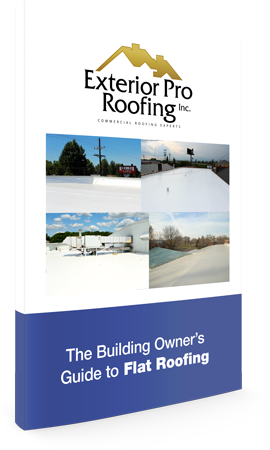Hot air welding of the Duro last commercial roofing system is a crucial part of keeping flat roofs from leaking, and just like anything it takes practice. I’ve found that we can speed up our training time and improve the quality of our crew’s hot air welding by teaching a simple 3 step process.

1. Tack weld
Step one is to tack weld the membrane in place so it doesn’t move or wrinkle during the final welding. Flat, straight seams are much easier to weld than trying to seal up and weld wrinkles in the Duro-Last membrane. You can use the edge of the roller to pull the membrane and remove wrinkles as you tack. We tack about every 9” - 12”.
What happens if you don’t tack? The membrane will move when welding which will increase wrinkles, cold welds and burns. Seams will look bad and may not function properly. During the tack weld you start with the hot air welder and roller in front of your body and tack as you move the welder and roller away from you.
Tip: Only tack to where your arms reach, don’t try to move and come back.
 2. Back Welding
2. Back Welding
The second step is to create a solid back weld that will trap hot air. Immediately after the last tack weld and without removing the welder from the seam, begin the back weld. This is a quick pass that brings the welder back towards you after you have extended your arms during the tack welding step and makes a continuous seal roughly one inch in from the edge of the seam of the two pieces of Duro-Last membrane.
What happens if you don’t back weld? You get inconsistent heat on your final weld and as a result have many cold welds and lifts. Without a back weld the welder will blow hot air out and it will dictate under the roofing membrane. A solid back weld traps in the the hot air of the final weld. Also a good back weld will not only help you work in a good rhythm with the welder but will also speed up the welding process. We find slower welding to be more fatiguing
 3. The final Pass
3. The final Pass
As with most things in commercial roofing the end result depends on how well the preparation was done and seaming up Duro-Last is no exception.
Now that you have tacked the membrane to where you can reach, left the welder under the membrane and brought it back towards your body making a continuous back weld you are ready to begin the final weld.
On the final pass hold the welder at a 45 degree angle and roller roughly one inch behind. Make sure you leave about a 1/4 inch of the welder’s tip sticking out of the seam. Use the edge of the roller to depress the heated Duro-Last and roll “bleed out”. “ Bleed out” is what happens when The roller will pulls small line of melted membrane out from under the seam, this is visual confirmation that you are getting good welds. No bleed out means you should stay slow down and excessive bleed out or a yellowish or burnt look of roofing membrane means you can move faster and still has good tight welds.







